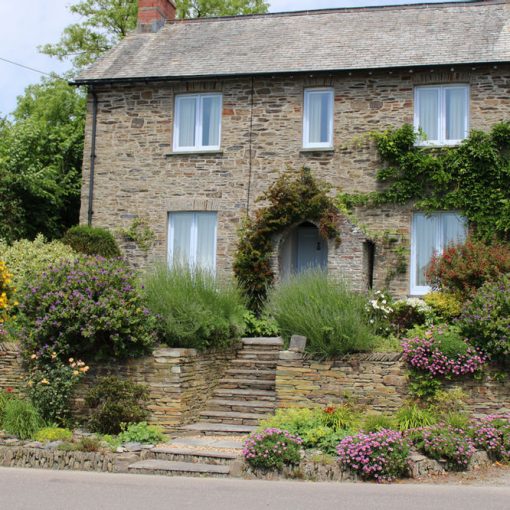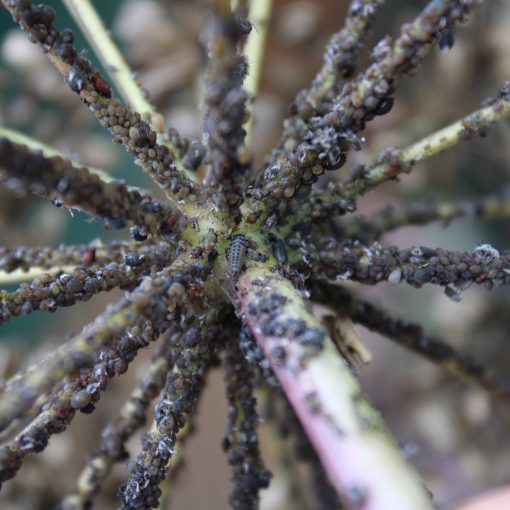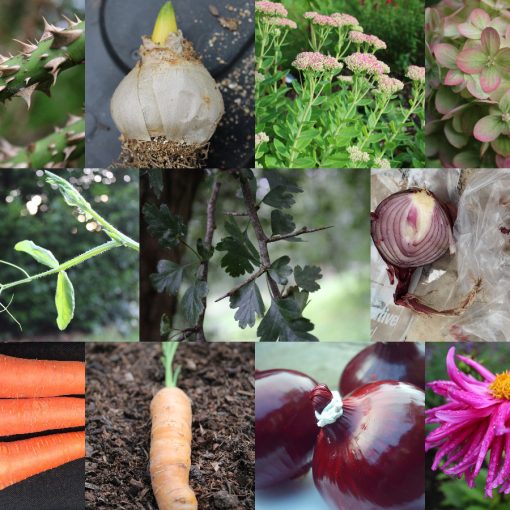The content in this blog is relevant to both the old and new syllabus.
OLD SYLLABUS The content in this blog is relevant to R2101
NEW SYLLABUS The following content is part of Unit 1 Topic 1 (Plant Science 1) Element 3 (External Parts of the Plant) The information below only focuses on the external structure of roots.
The NEW qualification specification outlines the following learning outcomes in relation to this element:
AO1 Knowledge
Characteristics of external plant structures.
Function of external plant structures and horticultural importance.
Use of external plant structures for identification of plant taxa.
Structures include roots, stems, leaves and flowers:
• Roots: fibrous, tap, root cap, hair
• Stems: nodes and internodes, bud types, arrangement, lenticels, bark
• Leaves: margin, shape, venation, arrangement and function
• Flowers: floral parts of typical eudicotyledonous and monocotyledonous flowers.
Inflorescence structures, seed heads.
AO2 Application:
How characteristics of external plant structures are used to identify and describe plant species.
How the characteristics of external plant structures support their function e.g. leaf arrangement enables efficient light capture for photosynthesis.
AO3 Integration:
Impact of external plant structure on horticultural performance, plant care and husbandry e.g. defence against pest and disease attack, or the establishment, spread and colonisation of new areas in weed biology e.g. impact of lifecycle, rhizomes.
Commentary
AO1 introduces the learner to the external parts of the plant. The characteristics, the function, and the arrangement of the parts of the plant are established, along with the professional terminology which is commonly used in horticultural settings, for example, alternate and opposite leaves. These concepts are applied at AO2 where the characteristics and the arrangements of the external parts of the plant are used in the identification of plant species. The links between the characteristics and arrangement of the external parts of the plant to their function are considered, thus allowing learners to build up a holistic knowledge of how plants work. In AO3 these concepts are considered in wider horticultural contexts, for example in the way they can be interpreted to predict the cultural needs of a plant, the role of external features in plant defence against pests and pathogens, or the way they can aid in out-competing other species. Please note: The scope within this element is limited to the terminology that is commonly used within seed catalogues and common terms used when horticulturists are describing plants in a professional setting.
Focus on the external structure of roots
Introduction
Plant morphology is the study of the physical form and external structure of plant parts such as roots, flowers and stems and is useful in the visual identification of plants.
This element looks at the external structures of roots, stems, leaves and flowers. Monocotyledons (monocots for short) and eudicotyledons (eudicots for short) have different flower, leaf, root and stem forms when analysed side by side so both groups are studied.
Roots: fibrous, tap, root cap, hair.
In a germinating seed the first organ to grow and establish is the root system.
These hidden underground structures (usually) are variable in shape and size and are constantly growing and exploring the soil.
Functions of roots
- Anchorage. To prevent trees being blown over for example.
- Absorption of water and dissolved minerals from the root environment.
- Transport of water upwards to other plant parts.
- Transport of sugars (phloem) up and down within the roots.
- Storage of sugars in the root tissue.
Root systems
There are two main types of root systems; fibrous roots and tap roots.
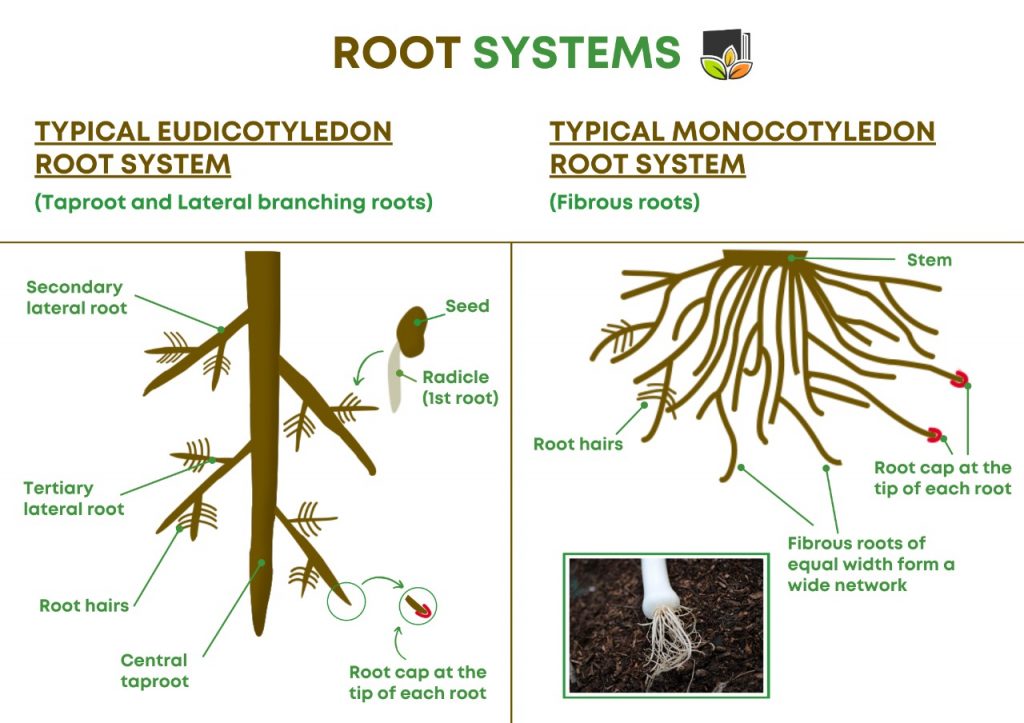
Taproot System
A tap-root root system is only found in eudicots, not monocots.
A tap root is a large central dominant root which grows vertically during the early growth stage. It develops from the radicle which is the first root to grow from a eudicot seed. Thinner secondary and tertiary lateral roots then branch sideways from the tap root. Tap roots are important for anchorage and act as a deep penetrating structure from which a fibrous branching root system develops. Young trees have a deep taproot for anchorage and to access water and nutrients. After a few years the tap root withers, and a spreading fibrous root system is the predominant root system type. In figure 4 below you can see that the tap root has withered and that the branching fibrous root system has grown sideways. Many trees have this wine goblet profile shape with a wide spreading root system. In some trees such as Pinus, the tap root persists. Taproots can become woody (due to secondary thickening) and thick. Some are extremely long and are specially adapted to tap into water and nutrients in the deep layers of the soil.
Taproots are the main area in roots where sugars are stored. For example: carrots, parsnips and Taraxacum officinale (dandelion). Storage of food allows plants to survive dormant seasons and provides a food for human consumption.
Fibrous Root System
A fibrous root system is typically found in monocots. Eudicots can develop a fibrous root system as they age but they always start with a tap root system.
Monocots have a fibrous root system from birth which consists of many roots growing from the base of the stem with no dominant root. Fibrous roots grow downwards and sideways. The roots are of uniform width and originate from the base of the stem, growing out like hairs on your head. They are thinner than a taproot and are multi branching. They are generally most abundant in the top 15cm of soil. Because of their branching nature and root hairs they have a large surface area for the absorption of water and dissolved nutrients and serve to anchor the plant. A fibrous root system can develop in mature eudicots. Some eudicots have a fibrous surface root systems and can be easily damaged such as Rhododendron and Camellia species. Other surface rooted plants such as Hydrangea dry out quickly and require additional irrigation during long periods of drought.
Fibrous root systems bind soil particles together and prevent soil erosion caused by wind or water. Grasses (monocots) on sloping banks prevent soil erosion.
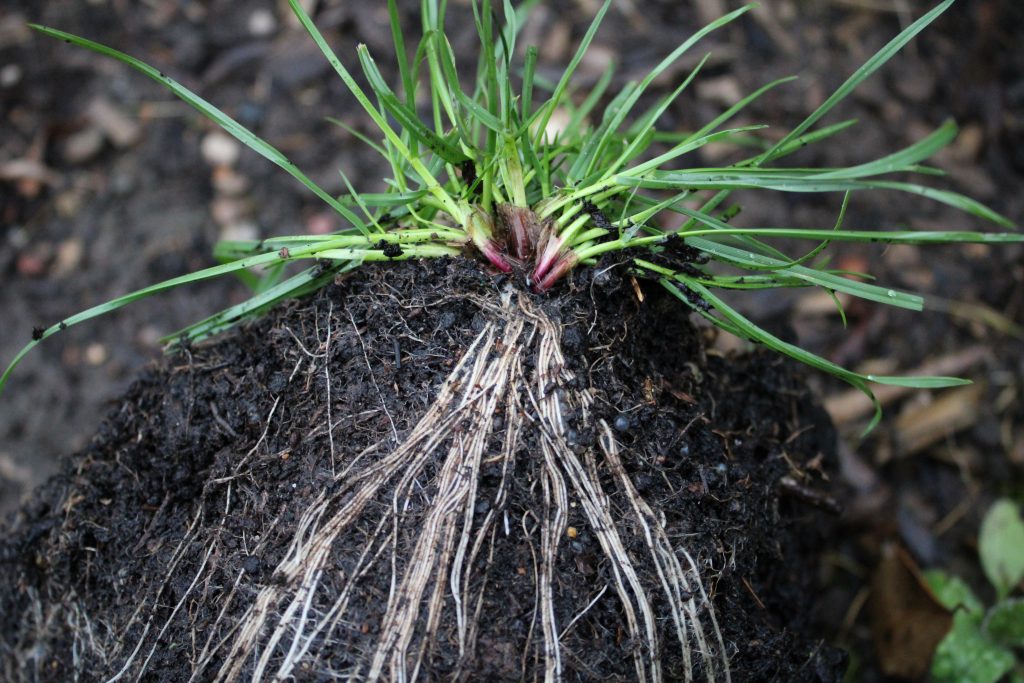
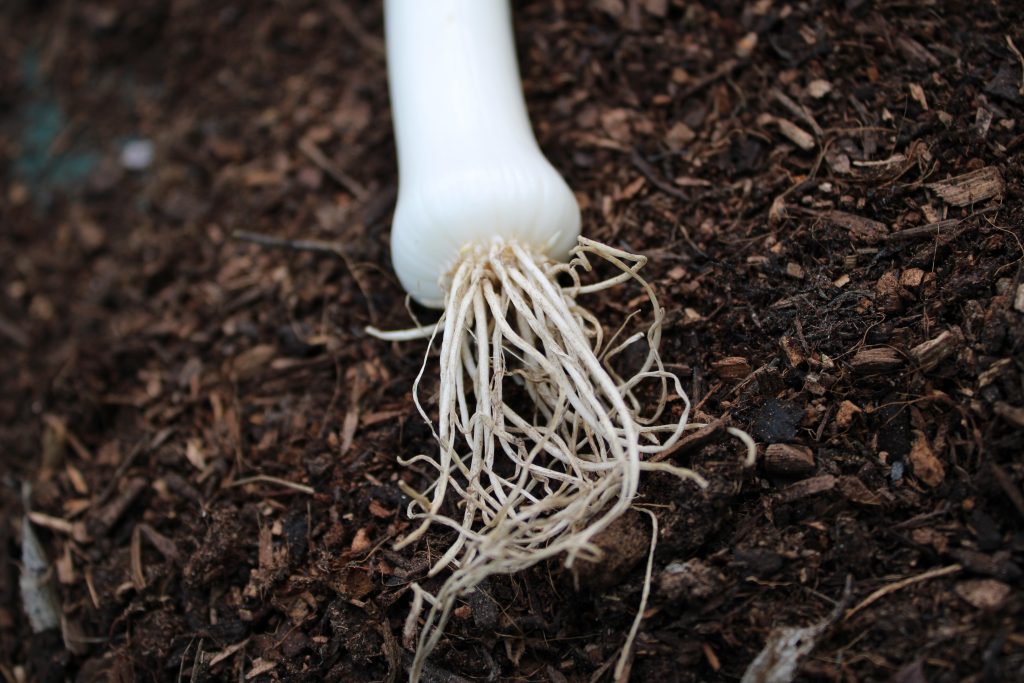
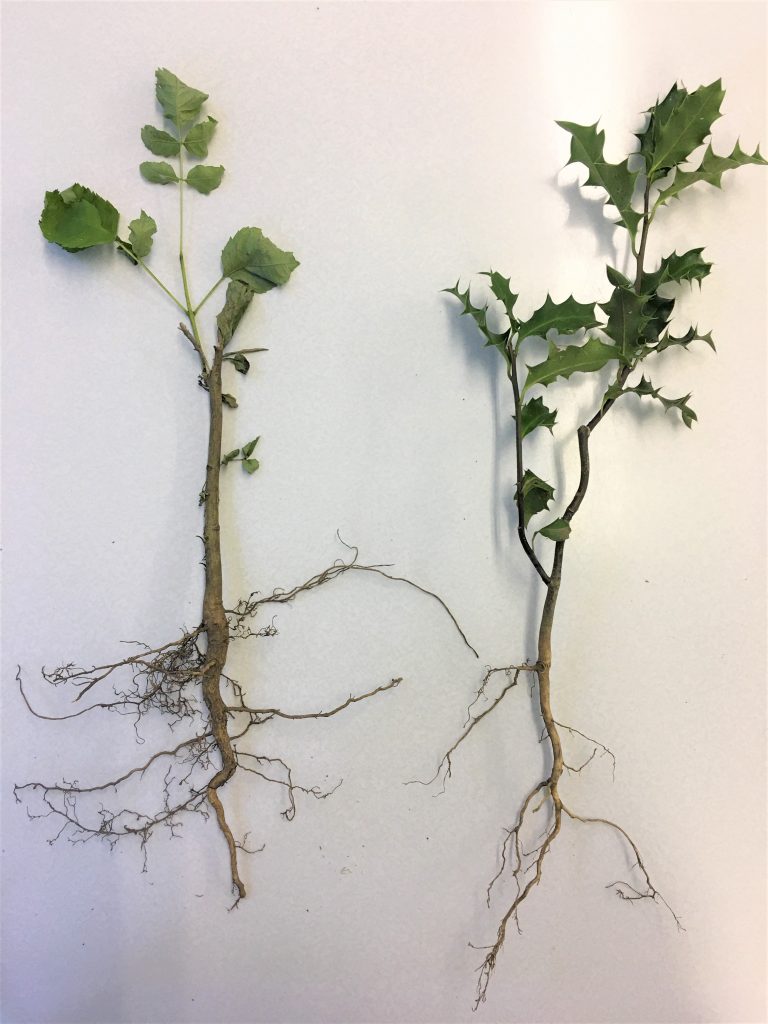
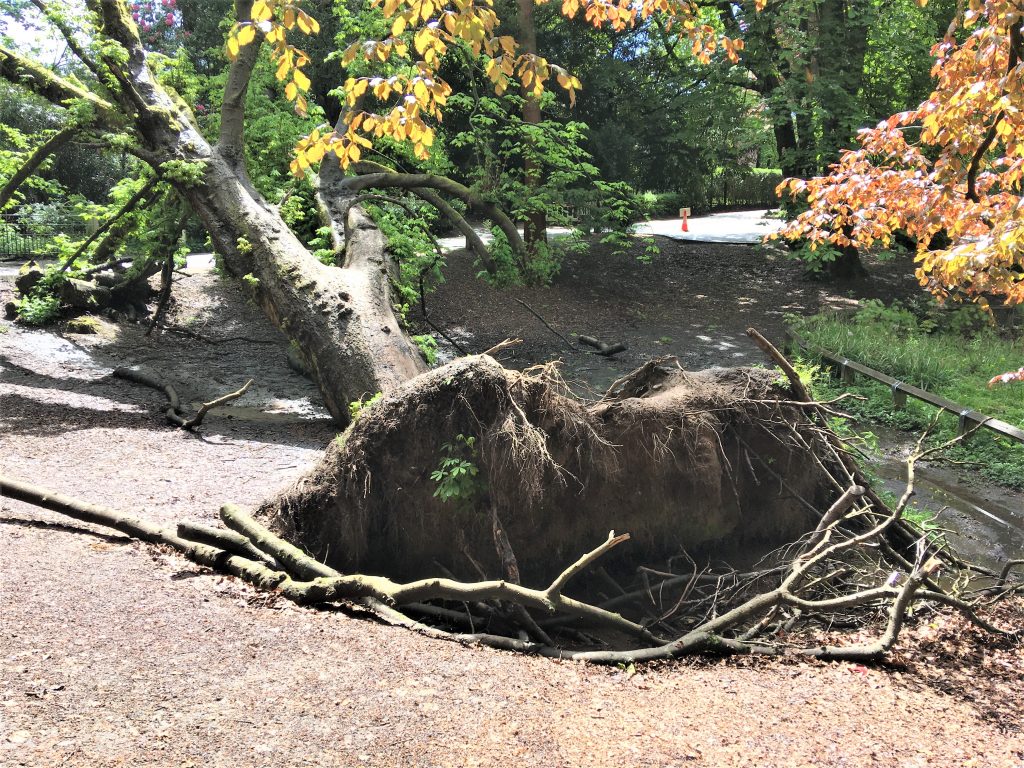
Root hairs
Root hairs are thousands of microscopic single celled structures found towards the tips of young roots.
Function
To absorb water and dissolved nutrients from the soil by providing a large surface area.
Root cap
A root cap is a thimble like structure which wraps around the tip of the root. It is a small structure but performs a very important function. It protects the delicate actively dividing cells which leads to lengthening of the roots. These root tips push downwards and sideways into the surrounding soil.
Function
1. Protect the growth point at the tip of the root so that it does not get damaged as it pushes through the soil.
2. Secrete mucilage which acts as a lubricant so that roots can push through the soil more easily.
In Summary
Root systems can be divided into Taproot and fibrous root systems:
- Tap root systems are typical of eudicotyledons
- Fibrous root systems are typical of monocotyledons
- Eudicotyledons develop a branched fibrous root system as they age
The main functions of roots are:
- Anchorage
- Absorption of water and mineral nutrients
- Storage of sugars
- Transport of water and minerals from the soil to the aerial plant parts
- Transport of sugars in both directions within the root system
Roots are designed so they:
- Explore a large volume of soil in order to access water and nutrients. Tap roots penetrate lower layers and fibrous root systems are multi branched and spreading.
- The protective root cap prevents physical damage to the growth point as roots push through soil particles.
- Root hairs are single cells with no water proof barrier (cuticle), with a large surface area for water and nutrient absorption.
- Deep tap roots help to anchor tall plants in their early stages of growth.
- Some tap roots are thick and store food allowing plants to perennate. (store food during the dormant period). For example Taraxacum officinale (dandelion) and Daucus carota (carrot)



